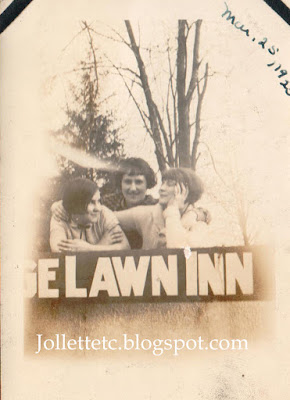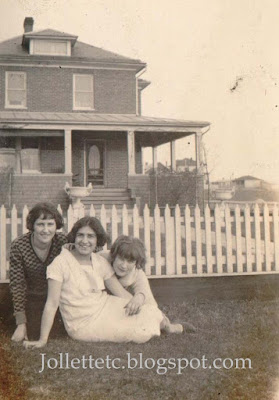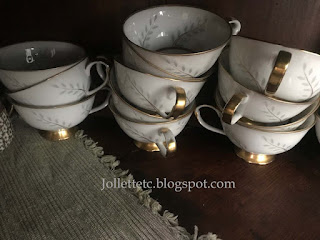 |
| image from Pixabay |
Westward expansion defined 19th century
America. Thomas Jefferson’s Louisiana Purchase in 1803 nearly doubled the size
of the country. He believed that the health of the country depended on
independent citizens who owned their own land and farmed their own farms. By 1840,
nearly 40% of Americans lived west of the Appalachian Mountains and east of the Mississippi
River. They had left their homes in the East in search of economic opportunity.
Like Jefferson, they associated land ownership with freedom.
At least three of my Jollett families were among those
who left Virginia to build a new life in the Northwest, the part of the country
now known as Ohio, Indiana, Illinois, Michigan, and Wisconsin.
Clarissa Ann Jollett, daughter of James and Nancy Walker
Jollett, was born in Orange County, Virginia about 1793. When she was 20, she
married John Sampson. The Sampsons were a prosperous family in Virginia, all
well established with very large farms.
So why did they leave Virginia in 1836? It seems they had
already achieved economic independence. John and Clarissa were hardly a young
couple starting out. They were nearly 50 years old. But they did it anyway with
8 children in tow. Maybe the move was to ensure more opportunities for the
children.
Clarissa’s unmarried brother James accompanied them.
While I don’t know the exact route they took, it is
likely they went north to Maryland to pick up the National Road.
 |
| from Google Images |
This was the first major improved highway funded by the
United States government. It was truly the gateway to the west for travelers
and pioneers alike.
Columbus, Ohio was their first significant stop where
they spent the winter. A granddaughter was born there. Then in the spring of
1837, the Sampson gang arrived in Wayne County, Indiana, where they farmed for
several years. In a book honoring the early pioneers of Indiana, several of the
Sampsons were featured. John and Clarissa’s son John recalled that there were
deer and turkeys roaming the woods near their farm and that they always had
plenty of food on the table as a result.
Two years later they moved on into Clay County. There in
Dick Johnson Township, John and Clarissa purchased about 80 acres of land. Over
the years they added to the parcel, developing quite a valuable farm.
Clarissa's brother Simeon and his family may have
traveled with them as well, but clearly they did not stay together for long.
In 1840, Simeon Jollett was in Jefferson, Ohio,
enumerated as Simeon Jolly. Clarissa’s family had already moved on to Indiana.
|
MALES
|
|
|
1 under 5
|
Robert
|
|
1 5-9
|
?
|
|
1 10-14
|
Henry
|
|
1 40-49
|
Simeon
|
|
FEMALES
|
|
|
1 5-9
|
Elizabeth
|
|
1 30-39
|
Nancy
|
In 1850, Simeon, aka Simon Jolley, was in Harrison
Township, Indiana with his wife Nancy, and three children Robert, Elizabeth,
and G.W. (George). I’m confident this is the same family from the 1840 census;
plus, now I can see Simeon and Nancy were from Virginia. Henry had married and
moved his family to Fayette, Ohio. Still no sign of the daughter Catherine who
supposedly had married one J.J. Hunter. Simeon was working as a shoemaker.
 |
| 1850 Harrison Twp, IN census |
By 1860, Simeon and Nancy Jolly “no -e” had hit the road
once again, this time to Tippecanoe, Indiana. Only George was still at home. As
for the whereabouts of Robert and Elizabeth, I have no clue. Vanished. There is no shortage of Robert Jolly’s and
Robert Jolley’s in Ohio, Illinois, and Indiana, so he could be any one of them.
Meanwhile, Henry and his family were in Randolph, Illinois.
 |
| 1860 Tippecanoe, IN census |
Between 1860 and 1870, Nancy died. In 1870, Simeon lived
with his son Henry and family in Lexington, Illinois. Catherine’s son Charles
was there too, enumerated as Henry’s nephew. Now Simeon’s son George was among
the missing.
 |
| 1870 Lexington, IL census |
John Sampson died on his farm in Clay
County, Indiana, at age 73. In 1875, Clarissa died at the home of her son
Sanford. The two are buried in the Stunkard Cemetery in Brazil, Clay County,
Indiana. Other members of their family are buried nearby as well.
 |
Tombstone of John and Clarissa Sampson
James Jollett's name is inscribed on the top |
When and where Simeon Jolly/Jollett died is another
mystery that might require a road trip of my own to solve.
Amy Johnson Crow continues to challenge genealogy
bloggers and non-bloggers alike to think about our ancestors and share a story
or photo about them. The challenge is “52 Ancestors in 52 Weeks.”
Wendy
© 2019, Wendy Mathias. All rights reserved.






















































